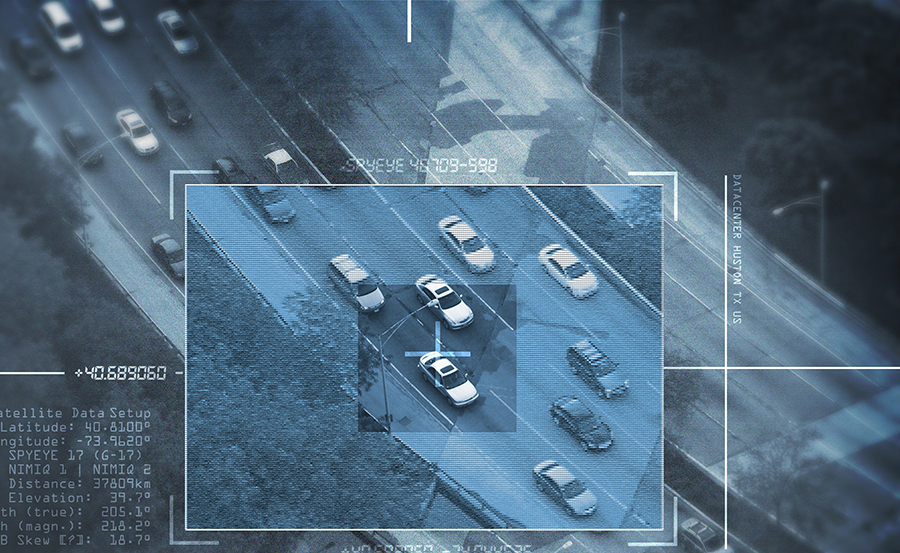What is Real-Time Video Content Analysis?

Why Traditional Surveillance Isn’t Enough
Video surveillance systems are everywhere—from city intersections and schools to retail stores and manufacturing sites. But 24/7 footage alone doesn’t guarantee safety or efficiency. Security teams are overwhelmed with data, and manually monitoring or reviewing endless video feeds leads to missed opportunities, delayed response times, and costly human error.
That’s where real-time video content analysis changes the game. By turning raw footage into actionable intelligence, organizations can shift from reactive to proactive security and operations.
What is Video Content Analytics?
Comprehensive video content analytics technology is backed by Artificial Intelligence and powered by Deep Learning. Deep Learning is a model in which neural networks are trained to recognize patterns from massive amounts of data. As the software processes raw video, it simultaneously detects, tracks, extracts, and classifies every object that appears and structures it into valuable information. This process creates structured data from unstructured video, enabling instant alerts, faster investigations, and smarter decision-making. In general, the technology is used to:
-
- Proactively respond to developing incidents as they happen
- Search video faster with AI-powered object classification
- Generate reports for traffic, crowd flow, and operational trends
- Augment staff by automating tedious monitoring tasks
A Real-Time Solution
Early video analysis products tried to reduce human monitoring by triggering alerts for unusual or suspicious motion activity. However, high rate of false alerting rendered these solutions inadequate for combatting the challenges of manual video monitoring. Furthermore, in situations where accuracy is crucial, imprecise or missed detections didn’t completely achieve the expected result of reducing human involvement. For this reason, video analytics solutions were first used to drive efficient post event investigation. But now real-time video content analysis has evolved tremendously, resulting in highly effective, alerting capabilities that support proactive safety and security measures. While the human operator isn’t entirely removed from the process, current systems have much higher detection accuracy and more sophisticated capabilities than their forerunners. This enables users to rapidly respond to dynamic conditions based on full situational awareness. Read on to discover how real-time alerting empowers operators to respond dynamically and proactively to developing situations.
Customizable Real-Time Alerts:
Video analytics technology improves situational awareness via customized, real-time alerts that are triggered when irregular activity is detected. When security teams know what normal or routine activity to expect, they can configure customized alerts based on specific, pre-defined criteria to notify them of irregular activity. Some examples of alerting capabilities include:
Appearance Similarity Alerts
Video surveillance operators can configure an alert based on object appearance similarity criteria like clothing and vehicle type. For example, an alert could be triggered when bikes are in an area meant for cars only, or when objects are dwelling in an area that should be clear of both people and vehicles. Video analytics can also accurately alert based on clothing, and sometimes, the technology can be further customized to recognize specific employee uniforms. By filtering between uniformed and non-uniformed individuals, managers can be alerted to unauthorized access of restricted areas with greater accuracy.
Count-Based Alerts
Alerts can be triggered when a certain number of objects (vehicles or people) are detected in a pre-defined area within a specified period of time. This can be useful in a variety of settings where traffic or crowd control is important. For instance, where a customer service department needs to address long queues of customers like at airport security, a large stadium entrance, a retail checkout counter, or a bank lobby.
Dwell Alerts
Dwelling or loitering can indicate intent to commit a crime, especially when people are lingering in entryways or facilities that store valuable inventory. When more people than expected are dwelling in a certain area, a video-based alert can make the security staff aware of environmental changes so they can respond quickly.
Face Recognition Alerts
Where facial recognition technology is allowed, security teams can use it to pinpoint suspects based on digital images, extracted from video or externally imported, and send out real-time alerts to proactively manage a situation. For instance, security staff can extract images of suspects from different shoplifting incidents and assemble a suspect watchlist based on video surveillance footage. When a suspect from a watchlist is detected entering the shopping center, security can be on high alert and track the suspected shoplifter, intervening if a repeat offense is surveilled.
Benefits of Real-Time Alerting
Real-time alerts help both security and operations staff increase their situational awareness, detect unusual and excessive loitering, monitor crowds or queues, and accelerate responses to emergencies, threats, or suspicious behavior. In response, they can send staff as needed to improve public safety or the customer experience. For these reasons, video content analytics technology is quickly becoming an essential complement to video surveillance camera networks, enabling organizations to maximize the value of their existing infrastructure.
Ready to Unlock the Full Value of Your Video Surveillance?
Don’t just record—respond. Learn how real-time video content analysis from BriefCam can help you enhance safety, increase efficiency, and get more out of your existing surveillance investment. Request a Demo
Editor’s note: This post was originally published in October 2019, and has been refreshed and updated for accuracy.
Signup to receive a monthly blog digest.